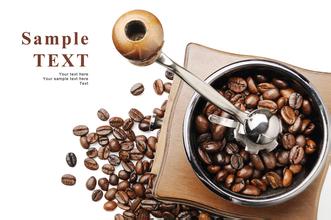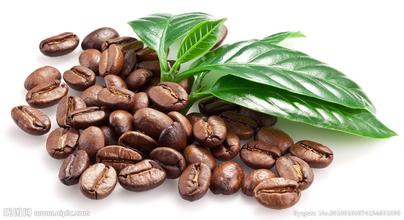How many legends are there in coffee?
As for shops that sell coffee, the legend begins with Mecca, a Muslim shrine. Around the 17th century, coffee became more and more popular in Italy, India, Britain and other places through trade routes.
Around 650, the first coffee shop in Western Europe filled with fragrance appeared in Oxford, England. …… During the Renaissance in 1605, some Christians thought that coffee was a pagan drink and called it "Satan's drink" and asked the then pope to ban it, but the pope who tried the "devil's drink" was amazed that there was such a delicious material in the world, so he arranged a baptism and formally designated coffee as a Christian drink, extending it from Muslim areas to other areas.
The origin of the word coffee
The word "coffee" comes from the Greek word "Kaweh", which means "strength and passion". Coffee tree is an evergreen shrub of Capsaceae. Daily coffee is made from coffee beans combined with a variety of cooking utensils, and coffee beans refer to the nuts in the fruit of the coffee tree, which are then roasted with appropriate roasting methods.
Coffee epic
Espresso spitting smoke rings in the coffee shop, a cup of warm hands and warm heart in the hands of friends in the winter afternoon, or even busy regular days, messy desks quietly release a cup of soothing instant coffee, every day, all kinds of people, in different corners of the world, waiting for a good cup of coffee.
People who are addicted to coffee can never imagine how to spend the winter without coffee to keep warm. And even those who do not drink coffee can not help but smell the original aroma of their inspiration from the works of many writers and artists: Beethoven's music, Picasso's paintings, and Haruki Murakami's words.
For hundreds of years, coffee has changed history in a way that is the most subdued and gentle, but the most defenseless.
In coffee, find a way for the soul to fly
It is said that the earliest coffee tree in the world appeared in the highly mature mountains of Ethiopia around the 10th century AD. Caldy, a wandering shepherd far from home in the dry season, suddenly found that the sheep had become more active and noisier than usual after eating the fruit of a wild shrub. He curiously picked some fruits and tasted them, but also wanted to dance happily on the prairie.
He distributed the fruits he had picked to the monks in the monastery, often helping them stay awake during the long evening prayers. The story of the magical fruit soon drifted away with the wandering steps of the nomads. From then on, crushing the coffee fruit and mixing it with animal fat into hard lumps, as an energy-boosting snack, became an addiction they could not quit during their lonely and bumpy nomadic life. It is even said that this group of earliest coffee people, Ethiopian women with the same skin color as coffee, have learned to make wine from fermented coffee fruits.
It seems that from the beginning, people have found a way to fly their hearts from coffee.
From the Middle East, burning the world's first cup of coffee
It is generally believed that the first cup of coffee in the world was carefully brewed by Arabs. In the oral literature of many European travelers at the end of the 16th century, Arabs sipped a kind of black molasses made from black seeds, confirming that long before Europeans embraced coffee in the 13th century, Arabs knew how to roast coffee and use the hot marks of fire to imprint fragrance.
From the first cup of mellow coffee, after two hundred years of time, in 1530, the world's first coffee shop was finally born in Damascus in the Middle East.
In 1615, coffee was stationed in Europe with the traveling merchants of Venice, and the French and Italians went crazy. They wrote books, poems, and even wars for it, as the Viennese proverb said: "the Europeans can stop the bow knife of Turkey, but not the coffee of Turkey.] They burn the flames of war just to make a good cup of coffee in the beacon lights.
Coffee, swinging between the angel's wings and the devil's downfall
When coffee first arrived in Italy, many conservative clergy called it Satan's masterpiece and suggested that it be expelled, so Pope Clemon VIII decided to taste it himself, when he sipped a demonic thick black serous from a warm cup. But he couldn't help changing his dictation: "Let coffee be washed into God's drink!"
To this day, in the hearts of many people, coffee still swings between the wings of angels and the downfall of the devil.
In 1654, the first coffee shop in Europe appeared on the streets of Venice. Over the next few decades, coffee shop signs releasing fragrance have been lit up in London, Paris and Vienna one after another. before the popular myth of CoCo Chanel and Gianni Versace invaded the modified European window, the coffee shop swept the world quietly in the least ostentatious and arrogant manner.
Since then, we have entered the era of coffee shops. Buried deeply in the memory of my father and brother, the golden age of coffee and literature began.
Have a long history
If the origin of coffee can be traced back to ancient African and Arab cultures, then the cafe people remember today is a pure European culture, or more accurately, a cradle of modern European civilization.
A pure product of European culture
Venice in 1645 gave birth to the first open street cafe in Europe. Paris and Vienna also followed, with relaxed and romantic French sentiment and Viennese literati temperament in their own style, which became the forerunner of the two major trends of European cafes in the future.
The embodiment of the life form of the upper society
The cafe brought the closed salon life of the upper class to the streets. in many cities, it was the earliest public social place where citizens could meet freely. People read newspapers, debate, play cards and play billiards here. The famous "coffee shop writer" claims that his lifelong career is first as a regular customer of a coffee shop, followed by a writer, and that he goes to a coffee shop not for coffee, but as a way of existence. From Rousseau and Voltaire, the banner of freedom of personality liberation, to many famous literati at that time, they all had their own cafes for regular meetings. For example, Dickens, the founder of realistic novels, Balzac and Zola, Picasso, and even Freud, the master of psychoanalysis, a series of brilliant names, write down the history of cultural development in modern Europe for hundreds of years in the regulars of different cafes.
Coffee and mood
Do you want a cup of coffee when you are in a good mood or when you are in a bad mood? Everyone's answer is different, but because coffee is a drink when you are in a good mood, you can taste the delicious coffee only when you want to see the blue sky and bask in the gentle sun. When you are in a bad mood, you should go to the bar for a drink. Lazy jazz, gripping opera, romantic French chanting or soft piano playing in the cafe are the most common things you will hear. Of course, it has something to do with the taste of the cafe owner. You can chat with close friends or bosom friends to discuss the topics they are interested in. With the deepening of time, you will find that your mood is gradually calm, and even some moved, all the reasons are very simple: casual.
Have a cup of coffee when you feel in a good mood today, and you will find the best side of coffee.
Coffee spirit
People who have drunk coffee know that coffee is bitter, and many people think it doesn't taste good. So they added some sugar to the coffee. Because the sweetened coffee is sweet, it is easier to taste and tastes sweeter. But coffee without sugar is mellow. The entrance may be bitter, but after aftertaste, unsweetened coffee is like an unretouched diamond. Naturally, there is a dazzling light, in which you will understand that the true bitterness will come, and you will appreciate the combination of life and nature. Too much coffee without sugar is like human life, after bitterness is mellow and tranquil sweetness, restlessness is calm enjoyment, patience is the vast sky. So, don't add sugar to coffee, don't let yourself indulge in sweetness, don't give yourself a chance to bow to suffering, don't let yourself bow to difficulties.

Important Notice :
前街咖啡 FrontStreet Coffee has moved to new addredd:
FrontStreet Coffee Address: 315,Donghua East Road,GuangZhou
Tel:020 38364473
- Prev

The origin, history and culture of coffee beans
Africa is the hometown of coffee. The coffee tree is probably an atlas of coffee culture found in Ethiopia's KAFFA province. Later, batches of slaves were sold from Africa to Yemen and the Arabian Peninsula, and coffee was taken everywhere along the way. To be sure, Yemen started growing coffee in the 15th century or earlier. Although the Arabs have
- Next

Introduction to the characteristics of various coffee beans-Honduras
Brief description: Honduran coffee, the washed coffee beans in the mountain areas are well received, while the coffee beans produced in the lowlands are slightly inferior in quality. the well-known producing areas are Santa Barra, Gracias, Komayagya in the East, and Chortika in neighboring Nicaragua; coffee beans range in size from medium to large, with mild taste, sour and slightly sweet, and the excellent products here are also sold to Japan.
Related
- Does Rose Summer choose Blue, Green or Red? Detailed explanation of Rose Summer Coffee plots and Classification in Panamanian Jade Manor
- What is the difference between the origin, producing area, processing plant, cooperative and manor of coffee beans?
- How fine does the espresso powder fit? how to grind the espresso?
- Sca coffee roasting degree color card coffee roasting degree 8 roasting color values what do you mean?
- The practice of lattes: how to make lattes at home
- Introduction to Indonesian Fine Coffee beans-- Java Coffee producing area of Indonesian Arabica Coffee
- How much will the flavor of light and medium roasted rose summer be expressed? What baking level is rose summer suitable for?
- Introduction to the characteristics of washing, sun-drying or wet-planing coffee commonly used in Mantenin, Indonesia
- Price characteristics of Arabica Coffee Bean Starbucks introduction to Manning Coffee Bean Taste producing area Variety Manor
- What is the authentic Yega flavor? What are the flavor characteristics of the really excellent Yejasuffi coffee beans?

